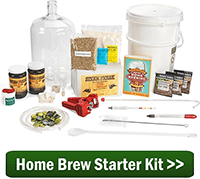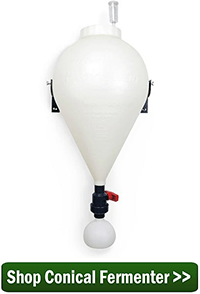 After weeks of patiently (or maybe not so patiently) waiting for your home brewed beer to ferment and condition, now comes the best part – drinking the fruits of your labor! Yes, there’s a time and a place for quaffing without paying much attention to what’s in the glass, but this is craft beer. Drinking it is an experience that involves all the senses, and the experience is just part of the reason why we love homebrewing to begin with. With that in mind here’s how to evaluate homebrew beer.
After weeks of patiently (or maybe not so patiently) waiting for your home brewed beer to ferment and condition, now comes the best part – drinking the fruits of your labor! Yes, there’s a time and a place for quaffing without paying much attention to what’s in the glass, but this is craft beer. Drinking it is an experience that involves all the senses, and the experience is just part of the reason why we love homebrewing to begin with. With that in mind here’s how to evaluate homebrew beer.
When evaluating home brew we generally pay attention to smell, sight, taste, mouthfeel, and overall impression. Keep in mind certain characteristics can be good or bad depending on the style being analyzed.
- Aroma: When evaluating beer, aroma often comes first in a tasting session so we can analyze scents before they dissipate. We look for aromas from the malted grains: toast, biscuit, caramel, molasses, dates, chocolate, roast coffee, smoke. From the hops we can expect sensations of citrus, pine, or herbs. But try to go beyond the top-level descriptor. If citrus, is it orange, lemon, or grapefruit? We may also pick up earthy, onion-y, or woody aromas from the hops. Do you smell any alcohol? What characteristics can you pick up from the beer yeast? Bread, cloves, fruity esters? Finally, can you pick up any off-flavors? Some scents (burnt rubber, sulfur, wet cardboard) indicate a problem, while others may or may not be desirable depending on the style of beer in question. You may even want to start making some tasting notes.

- Appearance: What color is the home brew? Don’t just look at whether it is cloudy or clear, but how cloudy is it? Opaque, or just a little hazy? Look at the head of foam. In published beer reviews, reviewers often measure the height by finger-width. (i.e. a two-finger head) Is the texture rocky or creamy? Is the carbonation effervescent or sparkling? How about lacing? Does the foam stick to the insides of the glass as you drink the home brew beer?
- Flavor: When evaluating a beer you will find that, taste shares many of the same characteristics and descriptors as smell, as the two senses are closely related. You can use many of the same words in evaluating the beer’s flavor. Is the taste identical to the aroma? Is it what you expected? What are the differences? How does the flavor change as the home brew moves across your tongue, from the initial sensation to the finish? How does the home brew beer change as the glass warms in your hand?
- Mouthfeel: Evaluate the beer’s body, carbonation level, and dryness. Is the body light, medium, or full? How highly carbonated is the home brew? Is the beer smooth from the use of wheat or oats? Dryness and astringency cross the line between taste and feel. Does the homebrew beer make your mouth pucker? This may be a desirable sensation for sour beers, but not so much for a milk stout.

- Overall impression: Put it all together. Do you like the homebrew? Would you drink a whole pint of it? Does the beer fit your expectations for the style? How is the balance?
Learning how to evaluate homebrew beer is as much about expanding your vocabulary as it is about enhancing your palate. Making tasting notes that will be relevant when read later. Not only can you train yourself to detect subtle flaws in your homebrew beer, but you can use your tasting abilities to inform future beer recipes. Keep in mind that different people have different palates, so it often helps to do a tasting with a group. Besides, it’s more fun that way!
Want to take your tasting abilities to the next level? Become a BJCP Beer Judge!
—–
David Ackley is a beer writer, brewer, and self-described “craft beer crusader.” He holds a General Certificate in Brewing from the Institute of Brewing and Distilling and is founder of the Local Beer Blog.

how long do beer need to sit after being cap ?
J.D., usually the beer will be ready to drink in about 2 weeks. Sometimes it can take 3 or 4 weeks with brews that set in the fermenter longer than usual.